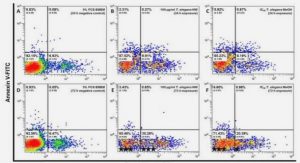Get Complete Project Material File(s) Now! »
Property Rights
Property rights theory holds a distinguished place in the NIE. Property rights are the rights of individuals to use resources (Eggertsson, 1990). Property rights of individuals over assets consist of powers to consume, obtain income from, and alienate these assets (Barzel, 1989). According to Furubotn & Richter (1998:72) the rights to an asset ‘consist of the rights to use, it, to change its form and substance, and to transfer all rights in the asset, or some rights, as desired’. Eggertsson (1990) identifies three basic categories of property rights. First there are user rights which determine what an individual can legitimately do on his property. Second there is the right to earn an income from an asset and to engage in contracts with others for this purpose. Third, there is the right to alienate or sell ownership rights over an asset to others.
A few idealised forms of property ownership can be distinguished, depending on the identity of the holder of exclusive rights. These are private ownership, state ownership, communal ownership and common ownership or open access (Furubotn & Richter, 1998; Eggertsson, 1990; Barzel, 1989; Demsetz, 1988). Thus exclusive rights may be held by individuals, which is private ownership, or by the state which is state ownership. Communal ownership is whereby a well-defined community controls access to a resource by excluding non-members and regulating its use by members. On the other hand open access tends to occur where it is impossible or costly to assign exclusive property rights for a resource to any entity, such as the open seas (Eggertsson, 1990).
A key thesis in property rights theory is that property rights develop to internalise externalities when the gains of internalisation become larger than the cost of internalisation (Demsetz, 1988; see also World Bank, 2003). Simply put, exclusive rights to an asset will be established and enforced when owners expect positive net gains from exclusivity (Eggertsson, 1990). The hypothesis is that as the value of an asset increase people are more likely to establish rights over it and that these rights will be made more precise (Eggertsson, 1990; Barzel, 1989). To use a real estate example, the theory predicts that there will be demand for exclusive rights as evidenced by formal title once land values have risen to such a level as to exceed the costs of titling programmes. In the presence of competition, exclusive rights provide the means by which private individuals are able to appropriate for themselves the benefits flowing from enhanced land values.
Hernando de Soto and ‘The Mystery of Capital’
The ‘popular economics’ of Hernando de Soto is perhaps a fitting place to begin a survey of the literature. In the words of Jones (2003) de Soto has placed a largely well known discussion of property rights, legal reform and state intervention into an antipoverty discourse. The central message in de Soto’s Mystery of Capital is that the poor in developing countries possess immense resources, but they hold these resources in defective forms. As de Soto puts it (de Soto, 2000:6) “ because the rights to these possessions are not adequately documented, these assets cannot readily be turned into capital, cannot be traded outside of narrow circles where people know and trust each other, cannot be used as collateral for a loan and cannot be used as a share against an investment”. De Soto describes these resources as ‘dead capital’ to emphasise the point that they cannot be deployed to create wealth. In describing the ‘undercapitalised’ informal sector that is the abode of this dead capital de Soto (2000: 29-30) says: “It is a world where ownership of assets is difficult to trace and validate and is governed by no legally recognised set of rules; where the assets’ potentially useful economic attributes have not been described or organised; where they cannot be used to obtain surplus value through multiple transactions because their unfixed nature and uncertainty leave too much room for misunderstanding, faulty recollection and reversal of agreements. Where most assets in short are dead capital”.In more formal terms de Soto is arguing that ill-defined and enforced property rights result in high transaction costs, thereby impeding the development of impersonal exchange systems he argues as being necessary for the creation of surplus value. In practical terms de Soto is advocating the formalisation of property ownership in the ‘extra-legal’ sector, and the simplification of procedures for granting formal property.
Perhaps not unexpectedly, considering the polemical nature of his discourse, de Soto’s arguments have elicited some fairly robust criticism. Payne (2002:11) argues that that de Soto fails to provide any empirical evidence to support the posited causal relationship between the development of property rights and increasing prosperity of the West. It is indeed unlikely that a complex outcome such as the development of the advanced industrial nations can be reduced to the one institution of property rights, however significant its role might have been. On the flip side de Soto appears too hasty in dismissing other potential causes of poverty in Third World Countries, such as culture. It is unlikely that the complex problem of under development can be attributed to a single factor, that of a lack of titles and deeds, however compelling the argument (Sachs, 2005). Sachs (ibid.: 56ff) identifies poverty itself, adverse physical geography, insufficient fiscal resources, governance failures, cultural barriers, geopolitics, lack of innovation and high fertility rates as more complete explanatory variables.
Sites and Services – 1970s
The failure of public housing programmes resulted in an ever-expanding proportion of the urban population being thrown back upon its own resources as regards housing provision (Ward, 1982). Inspired particularly by the writings of John F. Turner (Werlin, 1999), it was increasingly becoming apparent to policy makers that the solution to housing problems in urban areas lay with the people themselves. It was argued that funds should be directed away from expensive ‘package’ housing arrangements, such as fully-serviced housing projects with very high per capita production costs, towards ‘elements’ such as infrastructure, the provision of construction materials and technical advice (Ward, ibid.). Thus was born the concept of aided self-help, a concept that has been the dominant paradigm towards informal settlements up to the present.
In relation to settlement improvement, aided self-help has a number of variants, the main ones being ‘sites and services’ and ‘upgrading’. Sites and services holds that if governments can provide building sites, improve basic infrastructure and the environmental conditions of slums, they need not worry about shanty dwellings (UNHabitat, 2003; Werlin, 1999). It was argued that squatters had already shown great organisational skill in managing to erect houses under difficult conditions, and could maintain the facilities once provided, while gradually bettering their homes (UNHabitat, 2003; Werlin, 1999). Despite much initial optimism, sites and services programmes have been met with widespread failure. Main reasons cited include problems with land acquisition, insufficient resources committed and poor cost recovery for the infrastructure and services provided, rendering replication and scaling-up difficult (UN-Habitat, 2003; Werlin, 1999)
CHAPTER ONE: INTRODUCTION
1.1 Background
1.2 Research Problem
1.3 Conceptual/Analytical Framework
1.4. Aim, Objectives and Hypotheses
1.5 Preliminary Literature Review
1.6 Originality and Contribution of Research
1.7 Methodology
1.8 Terminology
1.9 Scope and Limitation
1.10 Structure of Thesis
CHAPTER TWO: REAL ESTATE MARKETS AND POVERTY ALLEVIATION – CONCEPTUAL FRAMEWORK AND LITERATURE REVIEW
2.1 Introduction
2.2 Key Concepts in the New Institutional Economics
2.3 Institutional Analysis and Real Estate Markets
2.4 Real Estate Markets and Poverty: A Conceptual Framework for Research
2.5 Hernando de Soto and ‘The Mystery of Capital’
2.6 Real Estate and Poverty Alleviation: Theory and Evidence
2.7 Knowledge Gaps
2.8 Research Agenda
2.9 Concluding Summary
CHAPTER 3 URBANISATION, INFORMAL SETTLEMENTS AND POVERTY ALLEVIATION – CONCEPTS AND POLICIES
3.1 Introduction
3.2 Urbanisation and Growth of Informal Settlements
3.3 Dealing with Urban Informal Settlements: Evolution of Policy
3.4 Dealing with Urban Poverty: Concepts and Policy
3.5 Informal Real Estate Markets and Poverty Alleviation: Review of Policy Framework
3.6 Conclusions
CHAPTER 4: METHODOLOGY
4.1 Introduction
4.2 Methodological Challenges in Informal Real Estate Market Research
4.3 Methodology in Economics: Contrasting Orthodox and Heterodox Approaches
4.4 Methodology in NIE Research
4.5 Study Research Methodology
4.6 Research Design
4.7 Research Execution
4.8 Concluding Summary
CHAPTER 5: NAMIBIA, WINDHOEK AND KATUTURA: A SOCIO-ECONOMIC PROFILE
5.1 Introduction
5.2 Namibia: Geographical, Historical and Economic Context
5.3 Urbanisation in Namibia
5.4 Poverty in Namibia
5.5 The City of Windhoek
5.6 Katutura
5.7 Concluding comments
CHAPTER 6: PRESENTATION OF DATA
6.1 Introduction
6.2 Statistical Tests
6.3 Characteristics of Sample
6.4 General Characteristics of Market Activity
6.5 Property Rights
6.6 Market Information and Outcomes
6.7 Incidence of Property Disputes
6.8 Rental Markets
CHAPTER 7: ANALYSIS AND DISCUSSION
7.1 Introduction
7.2 Aims, Objectives, Hypotheses and Conceptual Framework
7.3 General Nature of Real Estate Markets
7.4 The Market Process
7.5 The Effects of Property rights
7.6 Rental Markets
7.7 Evaluation of Hypotheses
7.8 Informal Real Estate Markets and Poverty Alleviation: Synthesis and Discussion
CHAPTER 8: SUMMARY, CONTRIBUTION AND FURTHER RESEARCH
8.1 Summary of Thesis
8.2 Main Findings, Conclusions and Recommendations
8.3 Contribution of Thesis to Knowledge
8.4 Limitations of Study and Areas for Further Research






